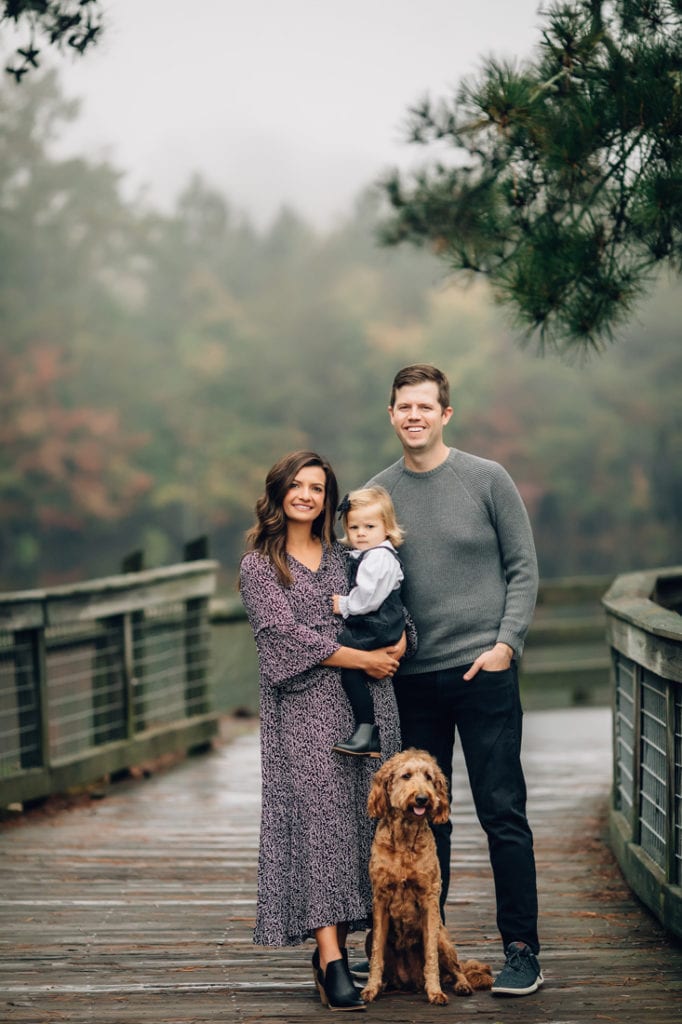FIVE QUESTIONS TO ASK AS YOU BEGIN THE ADOPTION JOURNEY.

Mara and Chris Frederick look forward to the day when their son is placed in their arms. They’re waiting patiently, but they have no idea when they will meet him. What the Sandy Springs couple does know is that he will be a non-Caucasian male child, the criteria they stipulated in the paperwork for the adoption process that they feel will help complete their family. After going through IVF to have their 2-year-old daughter, Holland, the couple knew they wanted another child. They felt compelled to consider adoption, which would allow them to open their home to a child in need while building a multi-ethnic family.
“We know it will be worth it,” Mara says. “We are faith-based people, and we feel we’ve been called to this plan. It’s going to be challenging. There will be cultural differences, and we’re going to have to learn. Nothing will really prepare us, but the more we educate ourselves and are humble, the better equipped we will be to answer our son’s questions. We’re ready to embrace it.”
The Fredericks are typical of families who choose to adopt. The process can be long and emotional. Here are some things to consider if it’s a path your family is exploring.

Should we consider domestic or international adoption?
According to Elizabeth DenBleyker, private adoptions program manager for Bethany Christian Services of Georgia, the landscape of international adoption has changed in recent years. While it remains a viable option, many countries, such as Ethiopia and Ghana, have either changed their laws or significantly cut back their participation in international custody transfers. Some countries have shifted their focus to their welfare systems and are working to keep children in their cultures of origin. Children who are on the list for adoption often have special needs. “The health of a child is a key factor in international adoptions,” says Whitney O’Connell, executive director of A Adoption Advocates of Georgia. “Placements are usually older children who have been in some type of need situation, and they have had malnourishment, abandonment, low stimulation, little to no attachment, lack of proper health care or [have] medical needs.” This type of adoption requires very special care and often access to medical resources upon arrival in the U.S. “The U.S. is seeing an increased capacity for helping children through domestic infant adoption or foster care adoption,” DenBleyker says. Infant adoptions often involve a birth mother voluntarily choosing to select a family for her child, while children in foster care-based adoptions typically have encountered some type of trauma that brought them into the situation. In either case, the children need a loving place to call home.
How much involvement would we have with the birth parents?
“Adoption is not like a Lifetime movie when a woman places a baby up for adoption, and the child is just taken away,” DenBleyker says. “Research has shown us that some sort of connection is beneficial for all three parties—the child, the birth mother and the adoptive family—if possible.” Domestically, O’Connell notes that many of today’s birth parents are looking for a semi-open or open level of contact with the family. This often means allowing for some communication, updates about the child provided to the birth parent by the adoptive parents or even a deeper, ongoing connection. “Most often, the international adoption is of an orphaned child with little to no information about the biological parents,” O’Connell says. “Options for contact are minimal.”

How will a child’s age affect the adoption transition?
Adopting a newborn will be a different experience than adopting a toddler or an older child. “Adopting an infant has a great probability of bonding from the time of placement,” O’Connell says. “The adoptive parents will be able to experience most of the ‘firsts’ with their new baby.” While this can still happen with an older baby or a toddler, the older a child gets, the more his or her needs will change. As many older children and teenagers come out of the foster system into adoption, there may be trauma, neglect or abuse that must be addressed. Pre-adoption training can help prepare an adoptive family for how to approach these issues.
What should we know about a multi-ethnic adoption?
Many of today’s adoptions allow families to provide a home for a child of a different race or ethnicity. “As children in a transracial adoption grow, they often don’t feel like they belong anywhere,” DenBleyker says. “We have to do everything we can to minimize that. And what really appears to help is immersion in the child’s culture. Don’t subscribe to being colorblind; see the child’s color and culture, and celebrate it.” A variety of proactive measures are available to honor your child’s birth culture and heritage, including expanding your social circle, choosing schools with diversity, celebrating traditional holidays and cultural events, and filling your home with culturally significant photos and mementos. According to O’Connell, many international adoptive families plan trips to their child’s birth country.
What’s the most important thing to know about adoption?
“Adoption is such a blessing,” DenBleyker says. “It’s a beautiful, complex, difficult and worthwhile way to grow a family.”
Bethany Christian Services of Georgia
6645 Peachtree Dunwoody Road
Atlanta 30328
770.455.7111
bethany.org
A Adoption Advocates of Georgia
7199 Dunhill Terrace N.E.
Sandy Springs 30238
770.853.9591
adoptionadvocatesofga.org
15 Minutes With columnist at Simply Buckhead. Freelance feature writer, children’s book author and President of Green Meadows Communications, LLC.











